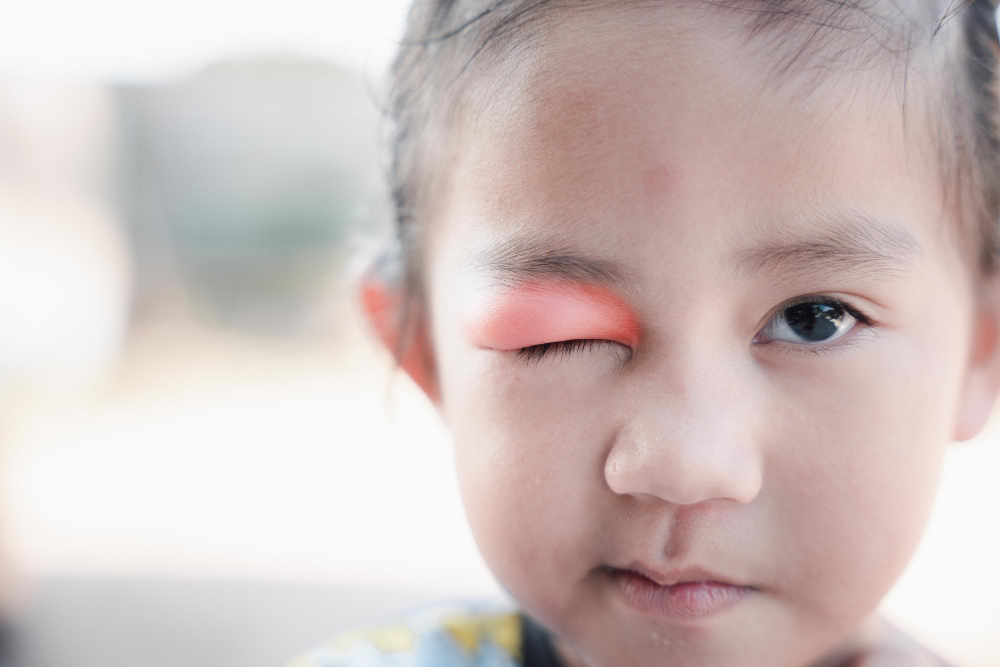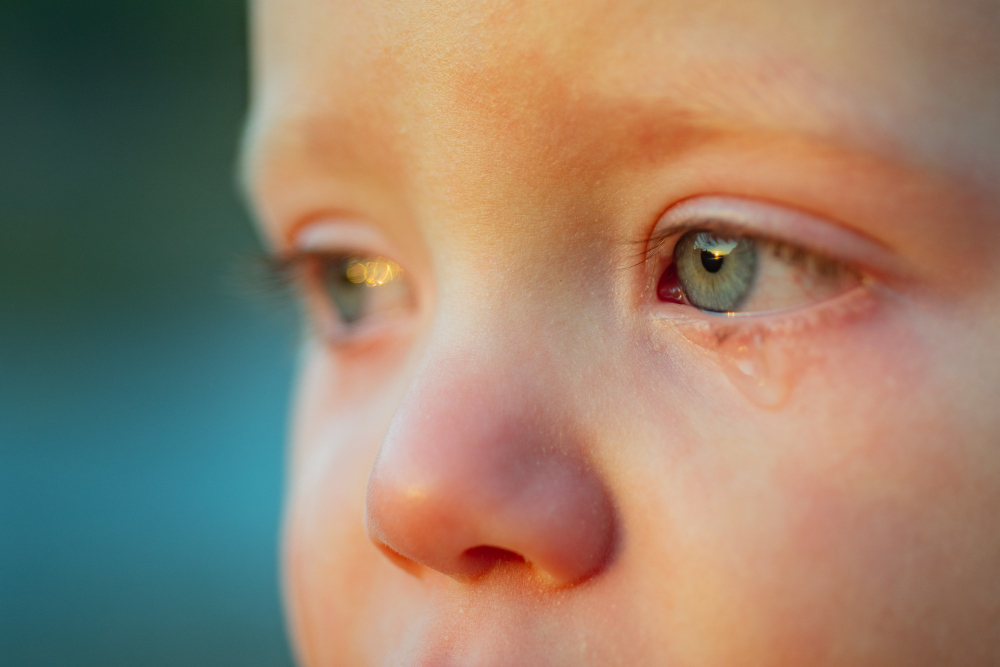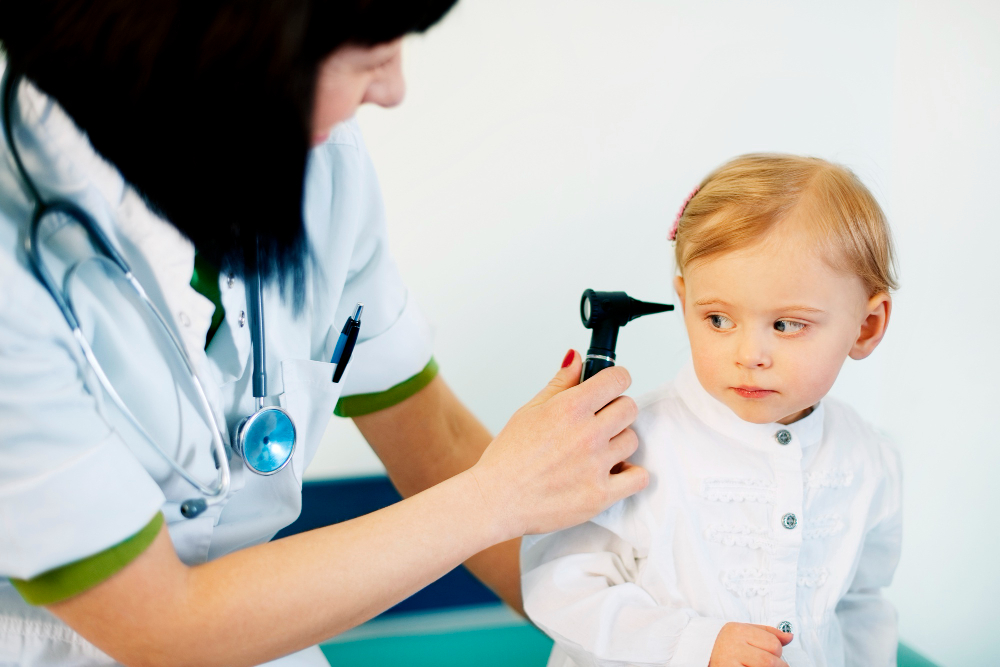When Do Babies Start Crying Tears? Infant Tear Production
Have you ever wondered when those precious, glistening tears start flowing from a baby’s eyes, signaling their ability to express emotions and regulate their vision? The journey of tear production in infants is a fascinating one, marked by developmental milestones and potential eye conditions that can impact this essential function. In this comprehensive guide to infant tear production, we delve into the timeline for when do babies start crying tears? Infant Tear Production, unraveling the mystery behind this natural process.
From exploring the significance of tears in a baby’s eye health to deciphering common eye conditions that may affect tear production, we equip you with the knowledge to navigate this pivotal stage of your little one’s development.
By understanding the normal progression of tear production in babies and recognizing warning signs of potential issues, you can confidently monitor your child’s eye health and seek timely interventions when needed.
Embark on this enlightening journey to uncover the secrets of when babies begin shedding tears, offering insight into their eye health and developmental milestones.
When Do Babies Start Crying Tears?

Babies’ tear production is an important and intriguing aspect of their development. While newborns do cry, their tear glands aren’t fully developed, which means they don’t shed actual tears. However, as they grow, their tear production gradually increases, allowing them to cry with tears.
Newborn eyes: What’s typical?
At birth, a newborn’s eyes are still adapting to the world around them. Their tear ducts, which are responsible for tear drainage, are often not fully open or functioning efficiently. As a result, babies might appear to cry without tears. This is entirely normal and shouldn’t be a cause for concern during the early days and weeks of your baby’s life.
When do real tears appear?
On average, babies start shedding real tears between two and four weeks of age. However, it’s important to note that this timeline can vary from one baby to another. Factors like gestational age, overall health, and individual development can influence when tear production becomes more pronounced.
Is it normal for some newborns to have tears right away?
Yes, some newborns may already have visible tears right from the beginning. While it’s less common, the presence of tears early on is still considered normal. Every baby develops at their own pace, and tear production is no exception.
Blocked tear duct
In some cases, a newborn’s tear ducts may be blocked, hindering proper tear drainage. This can lead to excessive watering and build-up of tears in the eyes. It’s important for parents to be aware of the signs of a blocked tear duct, such as persistent eye discharge or redness, and consult their pediatrician for guidance and potential treatment options.
Remember, every baby is unique, and their tear production timeline may differ. If you have concerns about your baby’s tear production or any other eye-related issues, don’t hesitate to reach out to your pediatrician or a pediatric eye doctor for further evaluation and guidance.
Newborn eyes: What’s typical?

When it comes to a newborn baby’s eyes, there are a few key characteristics to keep in mind. Understanding what’s typical for their eyes can help parents identify potential issues and monitor their baby’s eye health.
Appearance of Newborn Eyes
At birth, a newborn’s eyes may appear puffy, and their eyelids might be swollen or even sticky with discharge. This is a normal part of their development and should resolve on its own within a few days.
Another common observation is that newborn eyes may often appear unfocused or crossed. This is because the muscles that control eye movement are still developing and gaining coordination.
Function of Newborn Eyes
Newborn babies have tear glands and produce tears, but the tears they generate are usually not visible. The tear ducts responsible for draining tears from the eyes to the nose may not be fully developed yet, causing tears to accumulate in the eyes.
Unlike adults, newborns do not typically shed tears when crying. This may give the impression that they are not producing tears at all. However, it’s important to know that this is normal for their stage of development.
Over time, typically around the age of three to four weeks, these tear ducts mature, allowing tears to flow more freely and become visible when a baby cries.
It’s crucial for parents to understand these normal patterns and be aware of any abnormalities. If there are concerns about their baby’s eye health or tear production, it’s advisable to consult with a pediatrician or pediatric ophthalmologist for further evaluation.
Remember, each baby is unique, and their development may vary slightly. While some babies may exhibit tear production earlier, others may take a little longer to start shedding tears.
When do real tears appear?
Real tears, the kind we associate with crying and emotional expression, are an important developmental milestone for babies. The timeline for tear production varies, but on average, most infants start shedding tears between four to six weeks of age. However, it’s important to note that this timeline can differ from baby to baby.
Several factors contribute to the appearance of real tears. One key factor is the maturation of the lacrimal glands, which are responsible for tear production. These glands are located in the upper edge of each eye and gradually develop during the early weeks of a baby’s life. As the lacrimal glands mature, they become capable of producing tears.
Additionally, the production of tears can also be influenced by external stimuli. For example, some babies may start shedding tears earlier when exposed to bright lights, irritants, or intense emotions.
It’s important for parents to understand that some newborns may not exhibit tears for the first few weeks of life. This is typically within the range of normal development. However, if a baby reaches eight weeks of age and still does not produce tears, it’s recommended to consult a pediatric ophthalmologist to rule out any underlying issues.
While the absence of tears may not necessarily indicate a problem, it’s essential to stay vigilant regarding other signs of potential eye conditions or dehydration. If you have concerns about your baby’s tear production, it’s always best to seek the guidance of a healthcare professional.
Remember, each baby’s development is unique, and milestones like tear production can vary. By understanding the average timeline and factors influencing tear production, parents can have a better sense of their baby’s growth and development.
Is it normal for some newborns to have tears right away?

Tear production in newborns can vary, and it is not uncommon for some babies to have tears right from the start. However, the presence of tears immediately after birth is not a universal occurrence, and many newborns do not produce tears until a few weeks or even months later. The development of tear production is part of the maturation process for a baby’s lacrimal glands, which are responsible for producing tears.
The variation in tear production among newborns is considered normal and is influenced by factors such as genetics, gestational age, and overall health. While some babies may have visible tears in response to crying, others may only have minimal tear production or no tears at all initially. This variation does not necessarily indicate a problem with tear production or ocular health.
It is important for parents to remember that tear production tends to increase and normalize as the baby grows. As the lacrimal glands mature, tear production becomes more consistent and established. Therefore, if your newborn does not have tears right away, it is generally not a cause for concern.
However, if your baby continues to show a lack of tear production beyond a few months of age or if you notice other concerning symptoms like a persistent watery eye or signs of discomfort, it is advisable to consult a pediatrician or a pediatric ophthalmologist. They can assess your baby’s tear production and overall eye health to ensure there are no underlying issues.
In summary, while it is normal for some newborns to have tears right away, variations in tear production are common. If you have any concerns about your baby’s tear production or overall eye health, it is always best to seek medical advice for proper evaluation and guidance.
Blocked Tear Duct
A blocked tear duct is a common condition that affects babies, causing their tears to be unable to drain properly. This occurs when the tear duct, a small tube that carries tears from the eye into the nose, is partially or completely blocked. Here are some important things to know about blocked tear ducts in babies:
Symptoms of Blocked Tear Ducts
- Excessive tearing
Your baby’s eye may continuously water, even when they’re not crying.
- Crusty eyelashes or eyelids
You may notice a buildup of discharge or crusting around your baby’s eyes.
- Redness or swelling
The area around the tear duct may appear red or swollen.
- Recurrent eye infections
Your baby may be more prone to eye infections due to the blocked tear duct.
Causes of Blocked Tear Ducts
- Narrow tear ducts
In some cases, babies are born with narrower tear ducts, which can easily become blocked.
- Abnormal development
The tear duct may not fully develop in some infants, leading to blockage.
- Infection or inflammation
Infections or inflammation of the tear ducts can cause blockages.
Potential Treatments for Blocked Tear Ducts
- Gentle massage
Your pediatrician may recommend gently massaging the tear duct area to help clear the blockage.
- Warm compresses
Applying a warm compress to the eye area can help relieve symptoms and promote drainage.
- Antibiotic eye drops
If there is an associated infection, your pediatrician might prescribe antibiotic eye drops.
- Probing procedure
If the tear duct remains blocked after several months, a pediatric ophthalmologist might consider a probing procedure to open the blockage.
It’s important to consult your child’s doctor if you suspect your baby has a blocked tear duct. They can provide a proper diagnosis and recommend the appropriate treatment options to alleviate the condition.
Remember, while blocked tear ducts are common in infants, it’s always best to seek medical advice to rule out any other underlying medical conditions.
Infection

Infections can play a significant role in affecting tear production in infants. When a baby contracts an infection, especially in the eye area, tear production can be impacted. Here are some important points to consider:
Causes of Infection:
- Bacterial or viral infections, such as conjunctivitis (pink eye), can lead to inflammation and disrupt tear production.
- Upper respiratory infections can also affect tear production in infants.
Symptoms:
- Red, swollen, or itchy eyes are common signs of infection.
- Excessive tearing or a watery discharge from the eyes may also be observed.
- Crusting or stickiness around the eyes can occur, particularly after sleep.
Treatment:
Treatment for infections will depend on the specific cause and severity.
In the case of bacterial infections, doctors may prescribe antibiotic eye drops or ointments.
Viral infections typically resolve on their own, with treatment focused on managing symptoms and preventing further transmission.
It is important to note that if you suspect your baby has an eye infection or their tear production seems abnormal, it is crucial to consult with your pediatrician. They can provide a proper diagnosis and recommend appropriate treatment options.
Remember, maintaining good hygiene, including regular hand-washing and avoiding contact with infected individuals, can help reduce the risk of infections and promote healthy tear production in infants.
Viruses and Bacteria
When it comes to tear production in babies, viruses and bacteria can play a significant role. These microorganisms can affect tear production and lead to various eye conditions in infants. It’s important for parents to be aware of the potential impact of viruses and bacteria on their baby’s tears. Here are some key points to consider:
Infections and Tear Production
Infections, such as upper respiratory infections or conjunctivitis (commonly known as pink eye), can interfere with tear production in babies. When a baby is infected by a virus or bacteria, it can lead to inflammation in the tear ducts and disrupt the normal flow of tears. This can result in watery eyes or a decrease in tear production.
Eye Conditions Caused by Viruses and Bacteria
In addition to affecting tear production, viruses and bacteria can also cause various eye conditions in infants. These conditions may include viral or bacterial conjunctivitis, which are characterized by redness, discharge, and discomfort in the eyes. In some cases, tear production may be compromised due to these eye infections.
Seeking Medical Attention
If you notice any signs of infection or symptoms related to eye conditions in your baby, it’s important to seek medical attention. A pediatric ophthalmologist or a child’s doctor can provide a proper diagnosis and recommend appropriate treatments for any potential underlying viral or bacterial causes.
By understanding the role of viruses and bacteria in affecting tear production, parents can better recognize the signs and symptoms of related eye conditions in their babies. Seeking timely medical attention can help ensure the proper management and treatment of any infections or eye issues caused by these microorganisms. Remember, a healthy tear production is essential for your baby’s eye health.
What if my baby only cries tears from one eye?

It is not uncommon for babies to exhibit asymmetric tear production, where they may only cry tears from one eye. While this can be concerning for parents, it is often a temporary and harmless condition. Here are some potential underlying causes for asymmetric tear production in babies:
Blocked tear duct:
A blocked tear duct is a common condition in newborns that can cause excessive tearing in one eye and limited tear production in the other. This occurs when the tear duct, which drains tears from the eyes to the nose, is partially or completely blocked. Fortunately, most cases resolve on their own within the baby’s first year of life.
Infection:
Infections, such as conjunctivitis, can also lead to asymmetric tear production. Bacterial or viral infections can irritate the eye, causing excessive tearing and discharge. It is important to consult with a pediatrician if you suspect an infection, as it may require medical treatment.
Eye conditions:
Certain eye conditions, such as a clogged tear gland or an issue with the optic nerve, can also contribute to unequal tear production. These conditions are relatively rare but should be evaluated by a pediatric ophthalmologist to ensure proper management.
If your baby only cries tears from one eye, it is recommended to observe their overall eye health and monitor for any additional symptoms. If you notice redness, swelling, or signs of discomfort, it is advisable to consult with your child’s doctor for a thorough evaluation. Remember, while asymmetric tear production can be distressing, it is often a benign and self-resolving condition.
What may cause my baby to continue not producing tears?
While most babies start shedding tears between 4-6 weeks of age, some infants may continue to have limited or no tear production. This can be a concerning issue for parents, as tears are an important part of ocular health and lubrication. If your baby is not producing tears, it could be a sign of an underlying medical condition that requires attention from a healthcare professional.
There are various serious eye conditions that might impact tear production in babies. These conditions include:
Congenital Glaucoma
Congenital glaucoma is a rare but serious condition characterized by increased pressure within the eye due to blocked drainage canals. It can lead to damage to the optic nerve and vision loss if left untreated. Signs of congenital glaucoma may include excessive tearing, sensitivity to light, and cloudy eyes.
Fetal Alcohol Spectrum Disorder (FASD)
FASD is an umbrella term for a range of conditions caused by prenatal alcohol exposure. Babies with FASD may have lacrimal gland abnormalities that affect tear production. Along with other developmental issues, lack of tear production can be a possible symptom of FASD.
Familial Dysautonomia
Familial dysautonomia is a rare genetic disorder that affects the autonomic nervous system. It can lead to decreased tear production, among other symptoms like poor feeding and lack of tears during crying.
If your baby is not producing tears, it is crucial to seek medical help from a pediatrician or pediatric ophthalmologist. They can evaluate your baby’s eye health and determine if there is an underlying condition that requires treatment. Remember, early intervention and proper healthcare can significantly impact your baby’s eye development and overall well-being.
Please note that the provided information is for general awareness purposes. Always consult with a healthcare professional for a proper diagnosis and personalized advice.
Serious eye conditions
Serious eye conditions can sometimes lead to a lack of tear production in babies. It’s important for parents to be aware of these conditions and seek medical attention if they suspect their baby may be affected. Here are some of the eye conditions that can impact tear production:
Congenital glaucoma
Congenital glaucoma is a rare condition in which there is increased pressure within the eye. It can cause symptoms such as excessive tearing, sensitivity to light, cloudy corneas, and enlargement of the eye. Immediate medical attention is necessary to prevent vision loss.
Aniridia
Aniridia is a genetic disorder characterized by a partial or complete absence of the iris, the colored part of the eye. It can lead to various eye problems, including a lack of tear production. Babies with aniridia may also have other developmental issues, and early intervention is crucial.
Congenital lacrimal duct obstruction
Some babies are born with a blocked tear duct, which prevents tears from draining properly. This can result in excessive tearing, discharge, and recurrent eye infections. Most cases resolve on their own within the first year, but medical intervention may be necessary if the symptoms persist.
Retinoblastoma
Retinoblastoma is a rare form of eye cancer that primarily affects infants and young children. It can cause a lack of tear production, along with other symptoms such as a white pupil, crossed eyes, and decreased vision. Early diagnosis and treatment are essential for the best outcome.
If you suspect that your baby is experiencing a lack of tear production or any other concerning eye symptoms, it is important to consult a pediatric ophthalmologist or your child’s doctor. They can evaluate your baby’s condition and provide appropriate guidance and treatment. Remember, early detection and intervention can significantly impact your baby’s eye health and overall well-being.
When to Talk to Your Pediatrician

If you’re concerned about your baby’s tear production or lack thereof, it’s important to know when to seek medical advice. While it’s normal for some infants to take a little longer to start shedding tears, certain signs may indicate a need for further evaluation. Here are some guidelines on when to reach out to your pediatrician:
1. Lack of Tears beyond Three Months
Typically, most babies start shedding tears within their first few weeks of life. If your baby has reached three months of age and still hasn’t shown any signs of tearing, it’s worth discussing with your pediatrician. While there can be variations in tear production among infants, a prolonged absence of tears may warrant further investigation.
2. Persistent Redness or Irritation
If your baby’s eyes appear chronically red or irritated, it could be a sign of an underlying eye condition affecting tear production. Conditions like blocked tear ducts or infections may cause this discomfort. Consulting with a pediatrician will help identify the cause and determine the necessary steps for treatment.
3. Unilateral Asymmetry in Tear Production
If you notice that your baby only produces tears from one eye while the other remains dry, it could indicate an issue with tear drainage or an obstruction in the tear duct. This asymmetry should be checked by a healthcare professional to rule out any underlying concerns.
4. Any Other Concerning Symptoms
If your baby experiences persistent eye discharge, vision changes, or other symptoms alongside the lack of tear production, it’s essential to consult with a pediatrician. These additional symptoms may indicate a more serious eye condition that requires medical attention.
Remember, every baby is unique, and developmental milestones can vary. However, if you have any concerns about your baby’s tear production, it is always best to err on the side of caution and seek guidance from your pediatrician. They can assess your baby’s individual circumstances and provide appropriate advice or referral to a pediatric eye specialist if necessary.
When do Babies Start Crying Tears: The Takeaway
In this article, we explored the timeline for when babies start shedding tears and discussed common eye conditions that could impact tear production. Here are the key points to remember:
1. Newborn eyes: Newborn babies do not produce real tears right away. Their tear ducts may be undeveloped, preventing tears from forming. This is normal.
2. Timeline for tear production: Most babies start producing tears between 4 and 12 weeks of age. However, the exact timing can vary from baby to baby.
3. Blocked tear ducts: Blocked tear ducts are a common condition in infants. Symptoms include excessive tearing, discharge, and a watery eye. Most cases resolve on their own, but gentle massage and warm compresses can help.
4. Infections: Infections can affect tear production and result in symptoms such as redness, swelling, and discharge. Conjunctivitis, or pink eye, is a common infection that can impact tear production.
5. Viruses and bacteria: Certain viruses and bacteria can cause eye infections and affect tear production. It’s important to practice good hygiene and seek medical attention if your baby shows signs of infection.
6. Asymmetric tear production: If your baby only cries tears from one eye, it could be a sign of an underlying issue. It’s best to consult with a pediatrician or pediatric ophthalmologist for further evaluation.
7. Serious eye conditions: While most eye conditions affecting tear production are common and resolve on their own, some rare and serious conditions may require medical attention. If you notice significant changes in your baby’s tear production or other concerning symptoms, consult a healthcare professional.
Remember, every baby is different, and the timeline for tear production may vary. If you have any concerns about your baby’s tear production or eye health, don’t hesitate to reach out to your child’s doctor or a pediatric eye specialist for guidance and support.
The Final Verdict
For further guidance on your baby’s eye health and developmental milestones, we recommend staying informed and seeking professional advice whenever necessary. Remember, your child’s well-being is a top priority, and early detection and intervention can help address any potential issues effectively.
If you have any concerns or questions about when do babies start crying tears, eye health, or general development, do not hesitate to reach out to your pediatrician or a pediatric eye specialist for personalized guidance. Regular check-ups and open communication with healthcare providers can ensure that your baby receives the best care possible.
In the meantime, continue to observe and interact with your baby, providing them with a safe and nurturing environment for optimal growth and development. Monitoring your baby’s behaviors, milestones, and health indicators can help you stay proactive and responsive to their changing needs.
By being proactive, informed, and attentive to your baby’s well-being, you are taking important steps towards promoting their overall health and ensuring a bright and healthy future. Your dedication and love as a parent will play a crucial role in supporting your baby’s growth and well-being every step of the way.







Wow that was odd. I just wrote an extremely long comment but after I clicked submit my comment didn’t appear. Grrrr… well I’m not writing all that over again. Anyways, just wanted to say great blog!
Thank You So Much. However, we would love to know what you wrote.
magnificent points altogether, you simply gained a brand new reader. What would you suggest in regards to your post that you made some days ago? Any positive?
Wow, superb weblog layout! How long have you ever been running a blog for? you make blogging look easy. The full glance of your web site is wonderful, let alone the content material!